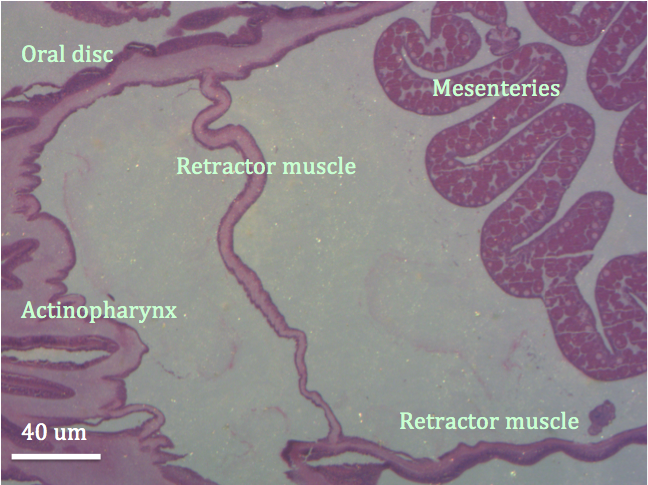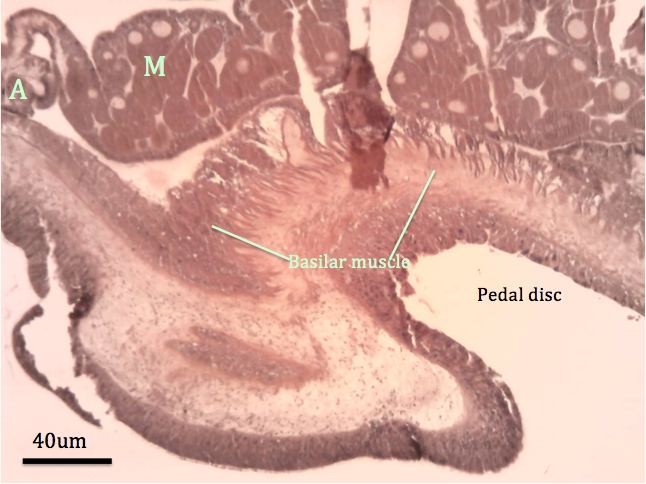Retraction-Deflation Sequence
The retraction-deflation response is usually initiated by the presence of a potential predator, to protect the vulnerable tentacles and oral disc, and to prevent the anemone from becoming detached from the substrate.
Most cnidarian polyps can retract their tentacles, oral disc, and column towards their pedal disc (Ruppert, 2004). The retraction-deflation response is a symmetrical shortening of the column and retraction of the column surrounding the oral disc and tentacles. The nerve net in the column endoderm mediates this response, as the distribution of the nerve net in anemones is the same as the conduction pathways for the retraction-deflation response. (Josephson, 1974)
During retraction, coelenteric fluid is expelled from the mouth and cinclides, allowing room for the tentacles and oral disc as they retract into the column. (Ruppert, 2004) The muscles responsible for retraction of the oral disc and tentacles are the septal retractor muscles. The septal retractor muscles are longitudinal muscles that start at the pedal disc and end on the underside of the oral disc. (Ruppert, 2004) Therefore when these muscles contract, they simultaneously pull the oral disc and tentacles into the column, and shorten the column. The sphincter muscles located around the oral disc then contract to seal off the top of the retracted anemone. (Ruppert, 2004)
|
|
| Video showing the retraction-deflation sequence of C. polypus when presented with a potential predator (poker). |
The loss of the coelenteric fluid means that the anemone must have a reinflation mechanism for when the threat passes. The pharyngeal siphonoglyphs pump water back into the coelenteron. The cilia surrounding the siphonoglyphs beat, creating a current so water can be sucked in when the retractor muscles relax. (Ruppert, 2004) Once the coelenteron is filled, it creates a backpressure on the pharynx, compressing it and preventing water from escaping back out of the anemone. (Ruppert, 2004)
Specimens were collected from Frenchman’s Beach, Stradbroke Island. One specimen was selected to be sectioned and stained in order to look at the musculature of C. polypus. The specimen was first relaxed in 1M MgCl2 in filtered seawater. The specimen was then placed in a large tube and the seawater was removed. The specimen was then fixed in a 4% paraformaldehyde fixative in a MOPS fixation buffer (4% PFA) 100% ethanol. The specimen was then sectioned and stained with hematoxylin and eosin.

|
| Figure 1: H&E stained section of C. polypus specimen showing the retractor muscle that is attached to the oral disc. When muscle is retracted it pulls the oral disc into the column whilst simultaneously shortening the column. Other important structures are labelled in order to indicate the relative position of the muscle from Figure 2 in Internal Anatomy and Physiology. |

|
Figure 2: H&E stained section of C. polypus specimen showing the basilar muscles of the pedal disc that allows for attachment to substrate. Also shows the parietobasilar muscle, another retractor muscle that shortens the column.
|
|

|
Figure 2: H&E stained section of C. polypus specimen showing the basilar muscle and the pedal disc. also shows A: Acontia and M: mesenteries.
|
|